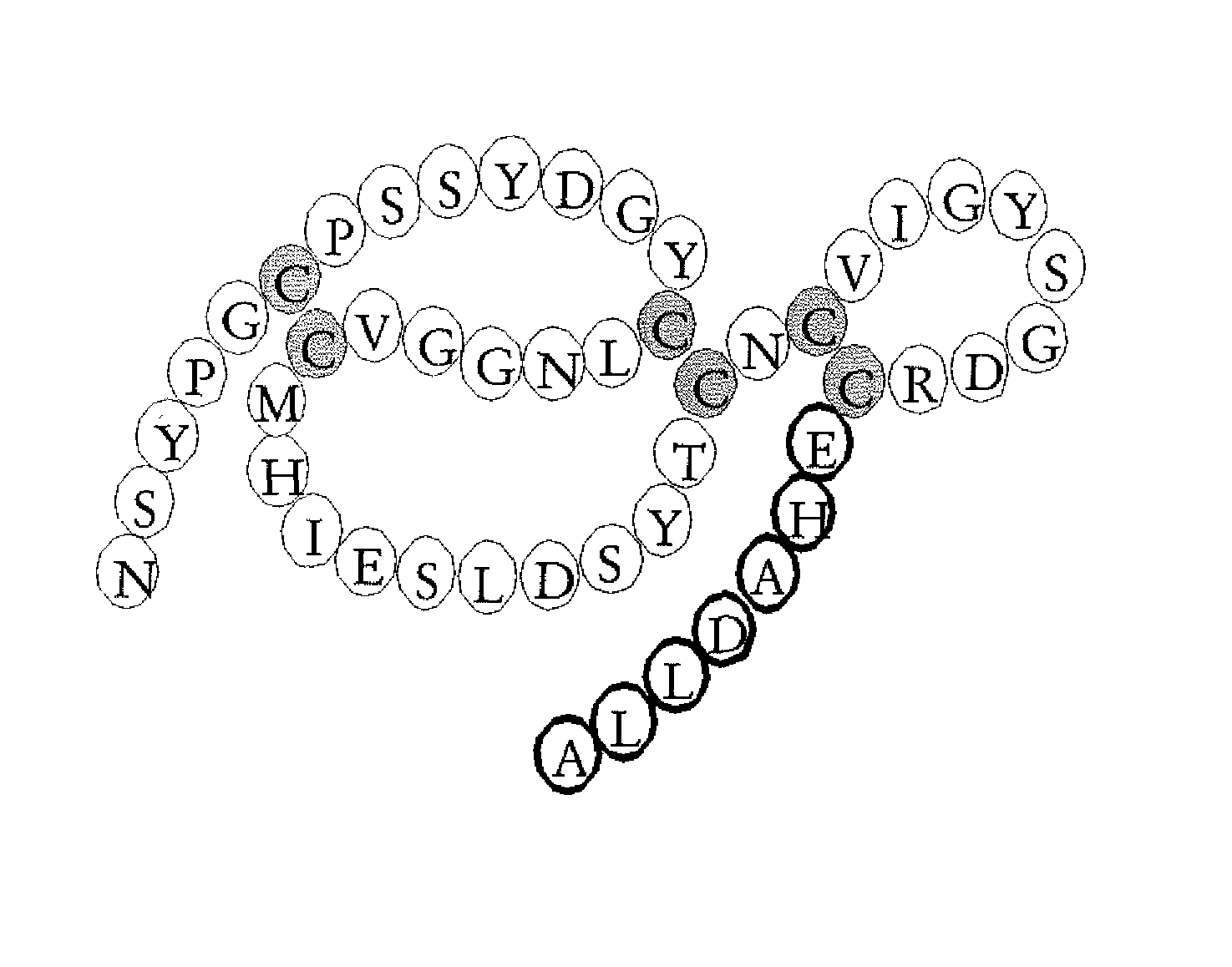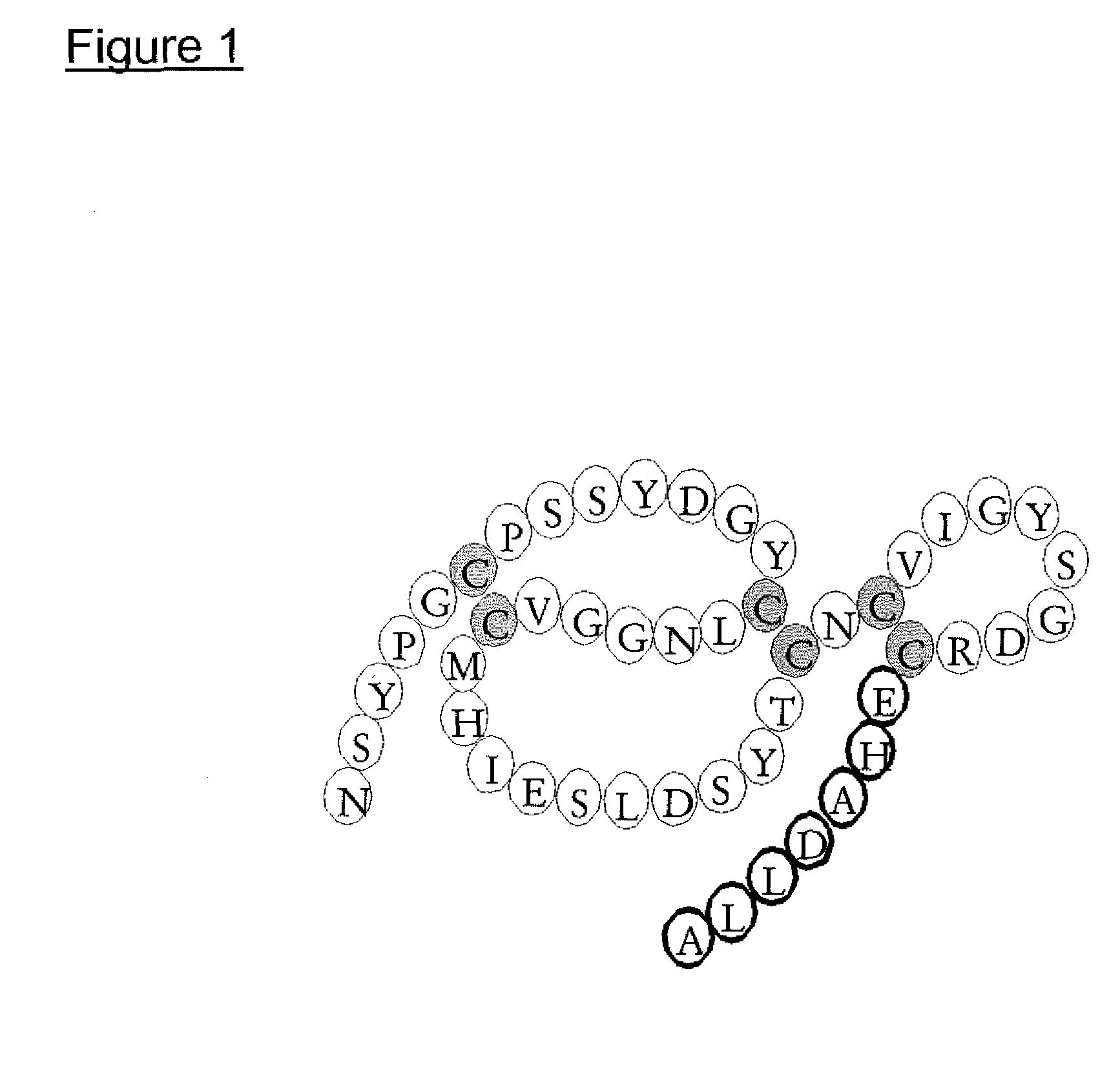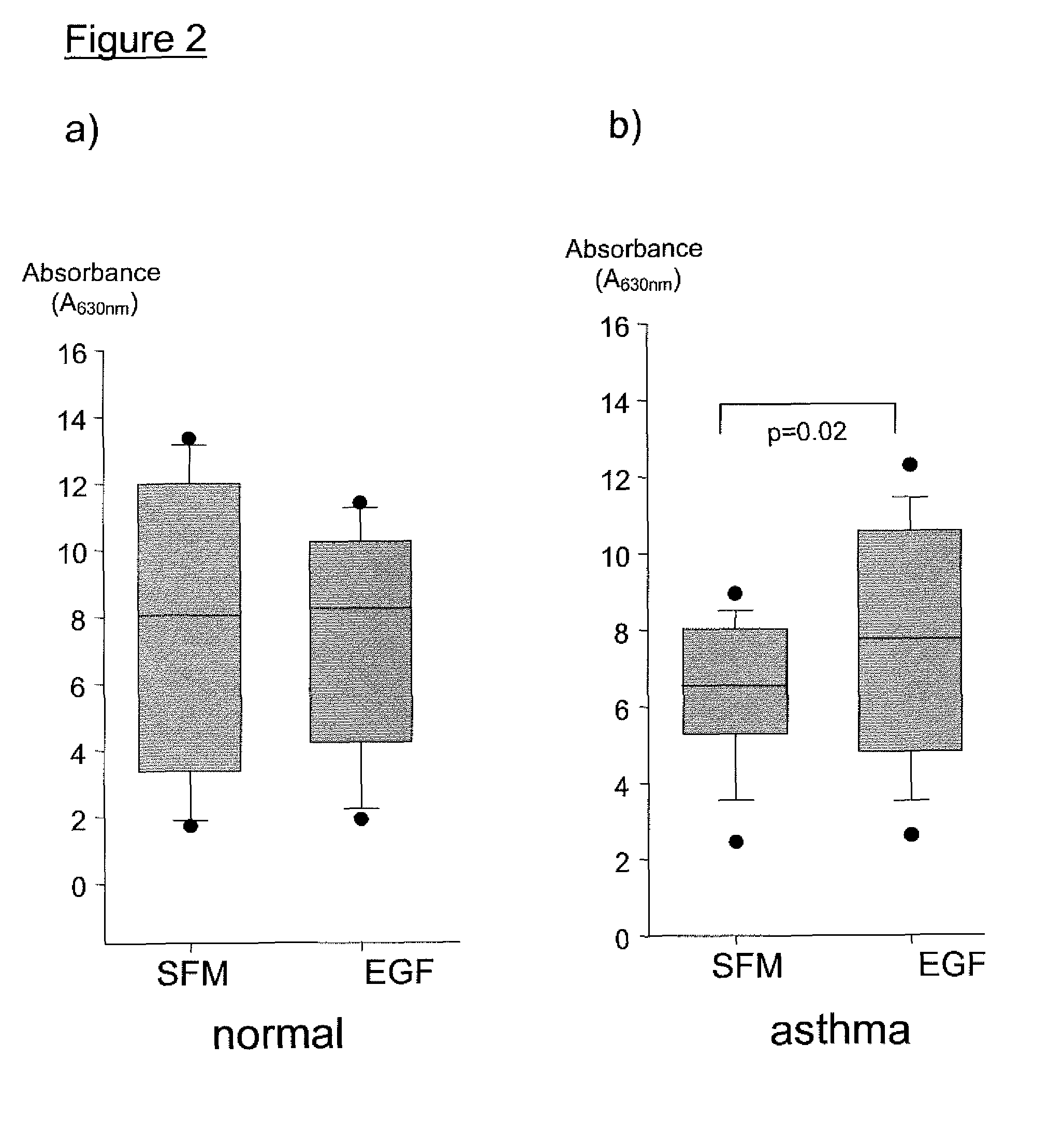Growth Factor Treatment for Asthma
a growth factor and asthma technology, applied in the field of growth factor treatment for asthma, can solve the problems of inability to directly target the problem, inability to achieve clinically effective means, and inability to achieve the effect of promoting epithelial repair
- Summary
- Abstract
- Description
- Claims
- Application Information
AI Technical Summary
Benefits of technology
Problems solved by technology
Method used
Image
Examples
example 1
Production of mEGF / TGFα44-50 and Wild-Type mEGF
[0027] The chimeric growth factor mEGF / TGFα44-50 and wild-type mouse EGF were produced in Pischia pastoris using the pPIC9 vector from Invitrogen BV, Leek, The Netherlands and characterised as previously described in Chamberlin et al., (2001) Eur. J. Biochem. 268, 6247-6255 and Puddicombe et al., (1996) J. Biol. Chem. 271, 30392-30397.
example 2
Proliferation and Mitogenesis Assays
(i) Primary Epithelial Cell Cultures
[0028] Bronchial brushings were taken from non-atopic, non-asthmatic control subjects and asthmatic subjects. Volunteers were characterised according to symptoms, pulmonary function and medication. Assessment of asthma severity was in accordance with the GINA guidelines on the diagnosis and management of asthma (Bousquet (2000) Global initiative for asthma (GINA) and its objectives.
[0029] Clin Exp Allergy 30 Suppl 1:2-5). All subjects were non-smokers and were free from respiratory tract infections for a minimum of 4 weeks prior to inclusion in the study. Written informed consent was obtained from all volunteers prior to participation, and ethical approval was obtained from the Joint Ethics Committee of Southampton University Hospital Trust. Subject details are shown in Table 1. All subjects were tested for atopy using a panel of common aero-allergens and serum IgE levels were measured by standard enzyme lin...
PUM
 Login to View More
Login to View More Abstract
Description
Claims
Application Information
 Login to View More
Login to View More - R&D
- Intellectual Property
- Life Sciences
- Materials
- Tech Scout
- Unparalleled Data Quality
- Higher Quality Content
- 60% Fewer Hallucinations
Browse by: Latest US Patents, China's latest patents, Technical Efficacy Thesaurus, Application Domain, Technology Topic, Popular Technical Reports.
© 2025 PatSnap. All rights reserved.Legal|Privacy policy|Modern Slavery Act Transparency Statement|Sitemap|About US| Contact US: help@patsnap.com



